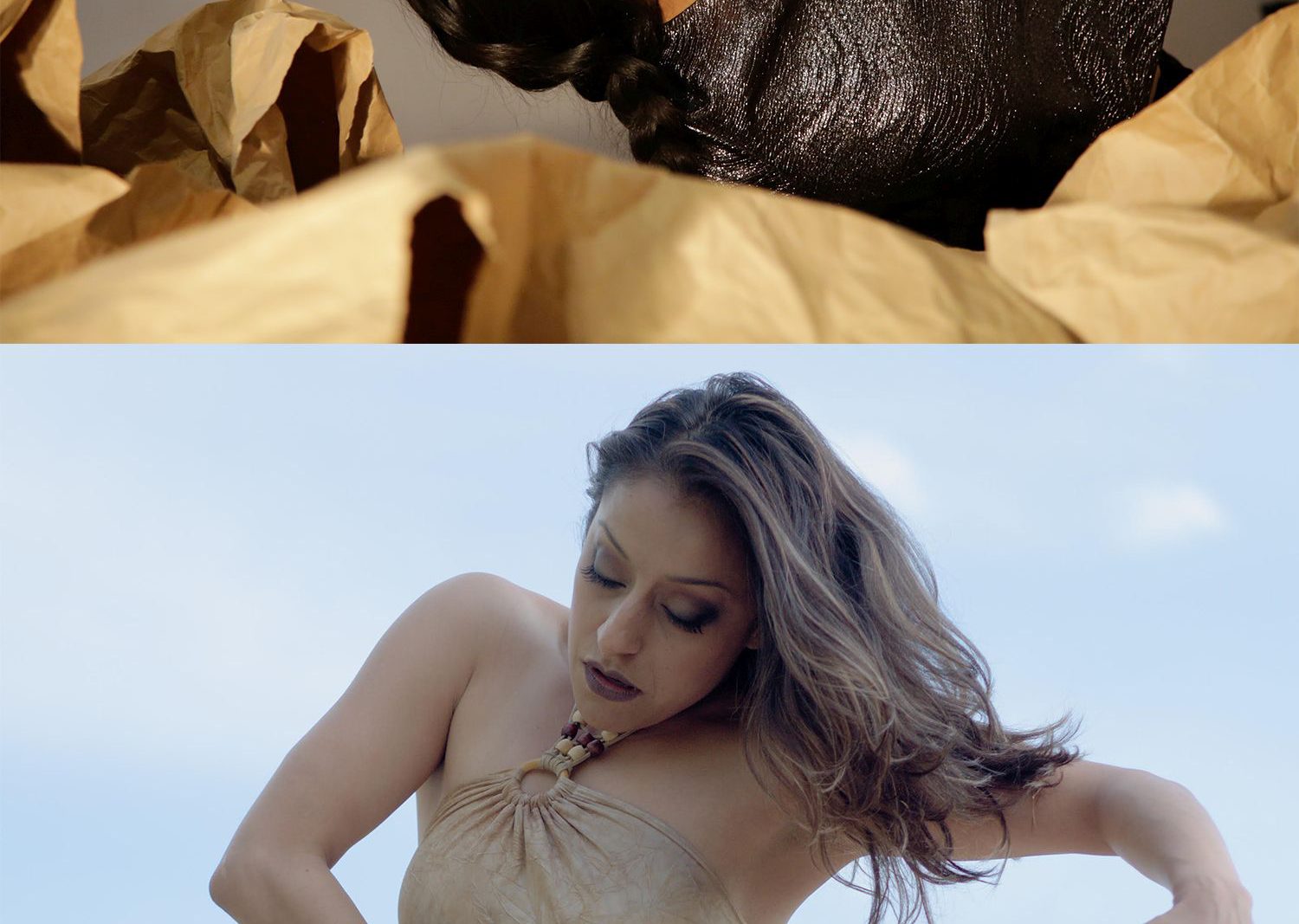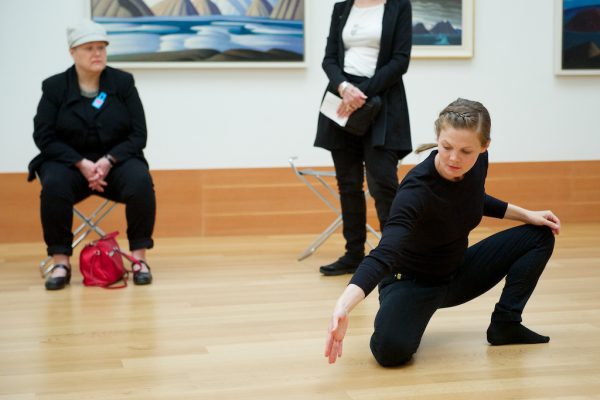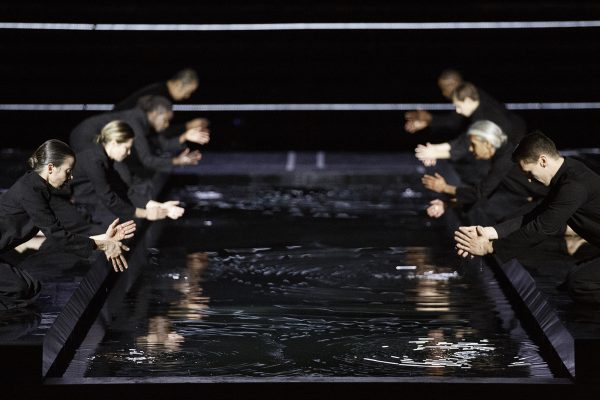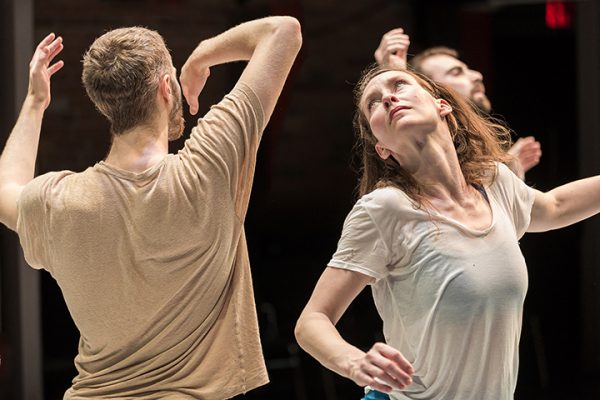I watched Prevailing Voices, a DanceWorks CoWorks production, on opening night. Pulsing through the audience, the majority of whom know performers Aria Evans and Lilia Leon, is a sense of intimacy and pride and I’m no exception. I am writing about what I saw and what I felt as a white woman from Newfoundland who does not share the ancestry of the performers. Evans is an interdisciplinary artist of Mi’kmaq, Black and settler heritage. Leon is a Mexican-Canadian dance artist with Mestizo heritage.
The show features link, choreographed and performed by Evans, and Perdida, choreographed and performed by Leon and co-written with charles c. smith. The solos come together in a show about identity exploration and female self-empowerment.
Beginning the evening is a powerful land acknowledgment. We all gather in the studio at Pia Bouman School for Ballet and Creative Movement serving as the entrance to the black box theatre. We are standing in a circle surrounding Evans and Leon and, with sage burning, remembering and honouring the caretakers of the land we are standing on. We are doing this as a group and it resonates. We all enter the theatre together.
This is what I saw.
The seats are arranged for link on three sides, nesting around the set designed by Andy Moro (NEPA’s Animikiing Training Program) and assembled by Michael Murray. Hanging upstage centre are the working inner gears and pendulum of a grandfather clock, made of light-coloured wood. Also hanging from the ceiling and strewn across the stage are bunches of light-brown paper. These bunches are big enough for Evans to hurl herself into, and she does. Lightbulbs are sporadically hung and positioned around the floor and a set of risers. The theatre glows.
Evans’ most memorable movements come through her interactions with the set, which she describes as a “metaphor for time running out in a world losing its resources.” There is a megaphone-like piece that is an inoffensive prop until it begins “speaking.” Near the middle of the piece, Evans picks it up and we hear a booming voice, “This is our land!” (She later tells me that the recording is from a Canadian government propaganda film produced to sell war bonds.) She slams the cone to the ground, silencing it. She lifts it, the voice starts again. She slams the cone to the ground, silencing it. She lifts it, the voice starts again. This continues until the voice can no longer be silenced, the slamming escalating to a high level of frustration and desperation. She later falls on the cone, as if impaling herself. She herself tries to yell through the cone but no sound comes out.
The most notable set pieces are the bunches of paper and the clock. Evans enters and pushes the pendulum, starting the tick… tick… tick… that underlies the music by Classic Roots. She begins by walking through the bunched paper to the top of three risers. She then tumbles in all directions — up, down and around — luxuriating in the paper. There is love felt for the bunches. She later fearlessly hurls herself into the bunches; they are there to catch her. The bunches floating from the ceiling are tied to the ticking clock (I think) and are slowly lowered. Once they are only inches from the ground (I don’t even immediately notice they have lowered because I am so captivated by Evans), they drop. The piece ends with her furiously gathering the bunches, covering them and offering them the safety of her body. She cradles them on her head like a basket of goods. Blackout.
During a brief intermission, the set is removed and the seating is restructured to a typical frontal setup for Perdida. A soft spotlight appears (lighting also designed by Moro) and Leon enters. She begins telling the story of, as the online promotional material describes, “a Mestizo woman’s journey to discover her ancestry and find the courage to build her own path in a new land.” Her story takes us through several feelings including but not limited to anger, sadness, fear and empowerment. Leon’s movements reflect her feelings. She fights with jabbing arms, kicking and swirling through an invisible battle. She rolls across the stage, contorting and bending in anguish. Her body twitches and jerks as she keeps her gaze steady on a fear that is beyond the audience. She ends with a dance of liberation, using the entire stage, unbound. Her sweeping movements reflect an earlier statement spoken during the work, “Don’t be afraid to be bold and big.” Her bold and big is beautiful dancing: lovely circular arms, elongated kicking and leaping legs and an involved torso. Music composed by Brandon Valdivia accompanies the piece.
This is what I felt.
Two solos complementing each other perfectly. Evans’ highly designed set tells her story and Leon’s spoken words set her scene.
In the program notes, Evans describes link as “a warrior dance about the fight to find and actualize our voices” and “a metaphor for confronting and moving through all of the obstacles that we face in life.” I feel her fight in her interaction with her set, made of materials from the land. She is fighting to protect and fighting to be heard.
In Leon’s notes, she writes “This is our dance…there is pain in remembering, courage in letting go, resilience in healing, joy in the work.” I feel her pain, courage, resilience and joy through her movement so that her many words are not always needed. Her voice through her movement is as powerful as if she were screaming.
I feel two artists emanating an absolute sense of identity and self-empowerment.
I feel prevailing voices.
Tagged: Contemporary, ON






